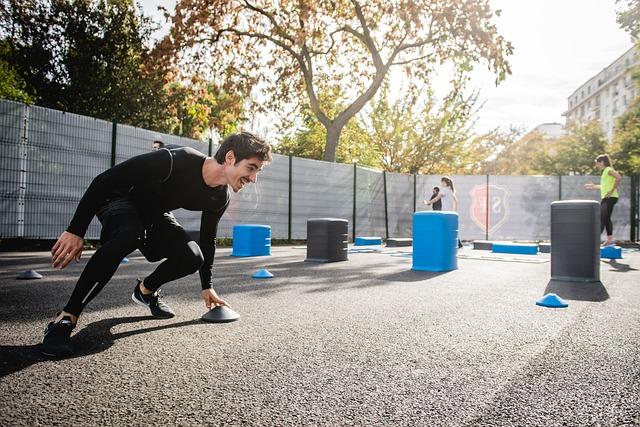In the bustling world of health and wellness, where trends come and go with the seasons, one timeless practice continues to stand firm in its promise of heart health: cardiovascular exercise. As silent battles wage within our bodies, with cholesterol levels often at the forefront, the role of cardio emerges as a steadfast ally. This article delves into the dynamic relationship between cardio and cholesterol, exploring how rhythmic movement and the steady beat of a heart in motion can transform our internal landscapes. Journey with us as we uncover the science and stories behind cardio’s power to reduce cholesterol levels, offering a glimpse into a healthier tomorrow.
Understanding the Hearts Ally: Cardios Impact on Cholesterol
When it comes to maintaining heart health, cardiovascular exercise stands out as a vital ally. It works its magic by enhancing the body’s ability to process and eliminate cholesterol, a substance that, in excess, can pose serious health risks. Through consistent cardio activities such as jogging, swimming, or cycling, the body’s metabolism is stimulated, leading to a decrease in low-density lipoprotein (LDL) levels, often dubbed the “bad” cholesterol. In parallel, these exercises help boost high-density lipoprotein (HDL), known as the “good” cholesterol, creating a balanced lipid profile that supports heart health.
Engaging in regular cardio not only fortifies the heart but also plays a pivotal role in cholesterol management through various mechanisms:
- Improved circulation: Cardio enhances blood flow, which aids in the transport and removal of cholesterol from the bloodstream.
- Weight management: By burning calories and reducing body fat, cardio helps maintain a healthy weight, a key factor in managing cholesterol levels.
- Increased enzyme activity: Regular physical activity boosts enzymes that help move LDL from the blood and liver, converting it to bile or excreting it from the body.
Through these benefits, cardio acts as a formidable force in the fight against high cholesterol, promoting a healthier, more resilient heart.
From Treadmills to Trails: How Cardio Exercises Lower Cholesterol
Engaging in regular cardio exercises, whether on a treadmill or along nature’s trails, plays a pivotal role in managing cholesterol levels. Cardio activities enhance heart health by increasing the heart rate and improving blood circulation, which helps reduce low-density lipoprotein (LDL) cholesterol—often referred to as “bad” cholesterol—while simultaneously boosting high-density lipoprotein (HDL) cholesterol, the “good” kind. This balance is crucial for maintaining a healthy cardiovascular system.
Benefits of Cardio for Cholesterol Reduction:
- Increased Metabolism: Regular cardio boosts your metabolic rate, which aids in breaking down cholesterol more efficiently.
- Weight Management: Maintaining a healthy weight through cardio exercises helps lower cholesterol levels naturally.
- Improved Heart Function: A stronger heart pumps blood more effectively, reducing the risk of cholesterol build-up in arteries.
- Stress Reduction: Cardio is known to lower stress, which can indirectly contribute to better cholesterol management.
Embrace the rhythm of cardio, whether it’s the steady pace of a treadmill or the invigorating challenge of a trail run, to harness its cholesterol-lowering benefits.

The Science Behind Cardio: Breaking Down Cholesterol Reduction
Cardiovascular exercise plays a pivotal role in managing cholesterol levels, thanks to its impact on the body’s metabolism and lipid profile. When engaging in regular cardio activities, the body experiences several physiological changes that contribute to lowering bad cholesterol (LDL) while increasing good cholesterol (HDL). This is achieved through enhanced enzyme activity that helps move LDL from the blood to the liver, where it is converted into bile or excreted. Simultaneously, cardio workouts improve the efficiency of lipoprotein lipase, an enzyme that breaks down triglycerides, further aiding in cholesterol reduction.
Cardio exercise induces the following beneficial changes in cholesterol management:
- Increased metabolism: Regular aerobic activities boost the metabolic rate, promoting the utilization of fats as an energy source.
- Enhanced blood circulation: Improved circulation facilitates the removal of cholesterol deposits from arterial walls.
- Weight management: Consistent cardio helps maintain a healthy weight, which is crucial for controlling cholesterol levels.
- Reduced inflammation: Exercise lowers inflammation markers, indirectly supporting healthier cholesterol levels.

Crafting a Cardio Routine: Expert Tips for Optimal Cholesterol Management
Engaging in regular cardiovascular exercise can play a pivotal role in managing cholesterol levels. By integrating cardio into your weekly routine, you not only boost your heart health but also enhance the body’s ability to regulate cholesterol effectively. When crafting a cardio routine, consider the following expert tips to maximize benefits:
- Variety is Key: Incorporate different types of cardio activities such as jogging, cycling, swimming, or even dance classes. This not only keeps the routine exciting but also ensures different muscle groups are engaged.
- Consistency Over Intensity: Aim for at least 150 minutes of moderate aerobic exercise each week. Regularity is more important than pushing yourself too hard in a single session.
- Monitor Progress: Keep track of your workouts and gradually increase intensity or duration as your fitness level improves. This helps in continuously challenging your cardiovascular system and improving cholesterol levels.
Incorporating these strategies will help create a sustainable and effective cardio routine that supports optimal cholesterol management.
